Sophia University and Diversity: A Historical Journey from a Men’s College to Coeducation

Sophia University is often associated with its large population of female students, who are renowned for their linguistic abilities, global outlooks, and professional achievements. This image is largely shaped by the university’s reputation for producing graduates who excel on the international arena. However, few know that Sophia University was originally an all-male institution. How, then, did it evolve to accept female students and undergo a profound transformation to become the diverse institution as seen today? This article traces its evolution, focusing on the development of support systems for female students.
1.The Era of Men’s College: 1913 to the Early 1950s
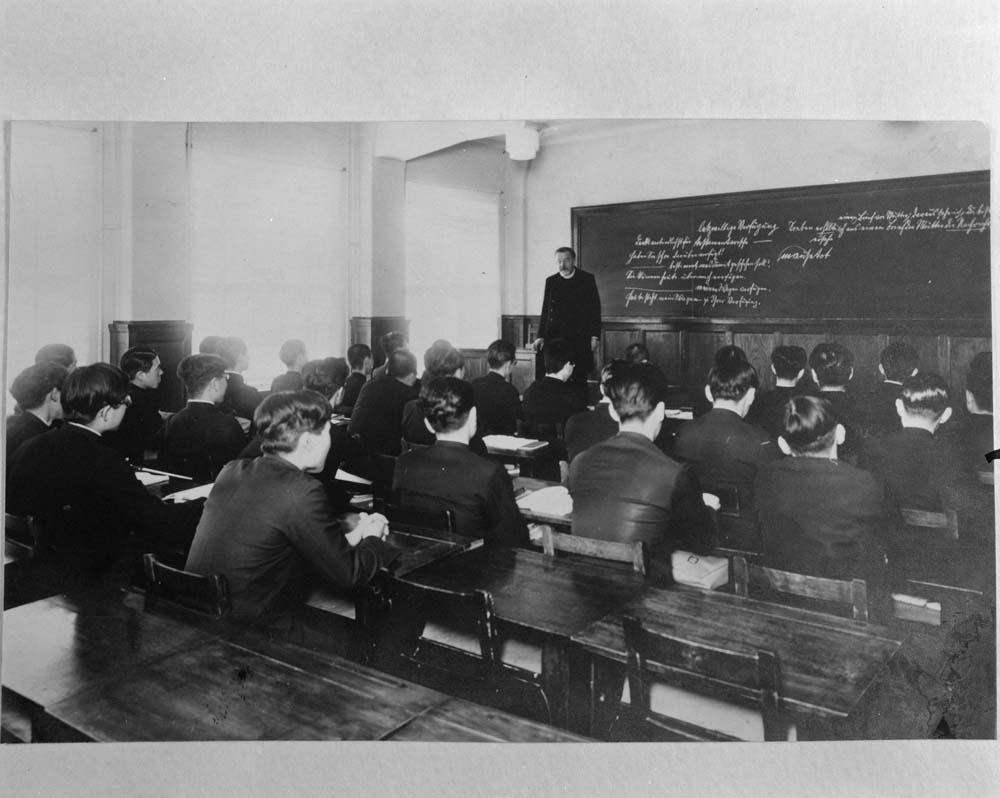
Sophia University was founded in 1913 by the Jesuit Order and remained a men’s college for 44 years, only admitting female students in 1957. During this period, it was common for Japanese universities to maintain gender-segregated education, and Sophia was no exception. The university placed a particular emphasis on German language education and liberal arts, and male students dedicated themselves to scholarly pursuits. However, as Japan’s society moved toward militarization, the atmosphere of academic freedom became increasingly stifled. During the war, many students had to interrupt their studies due to the draft, which disrupted their academic progress.
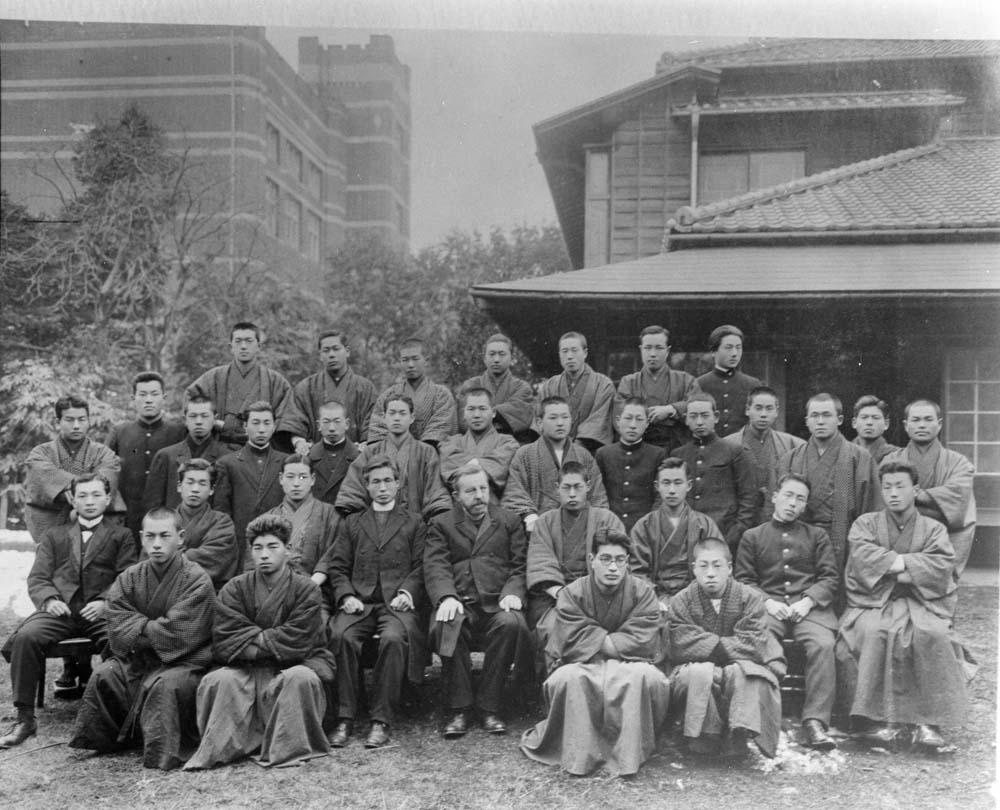
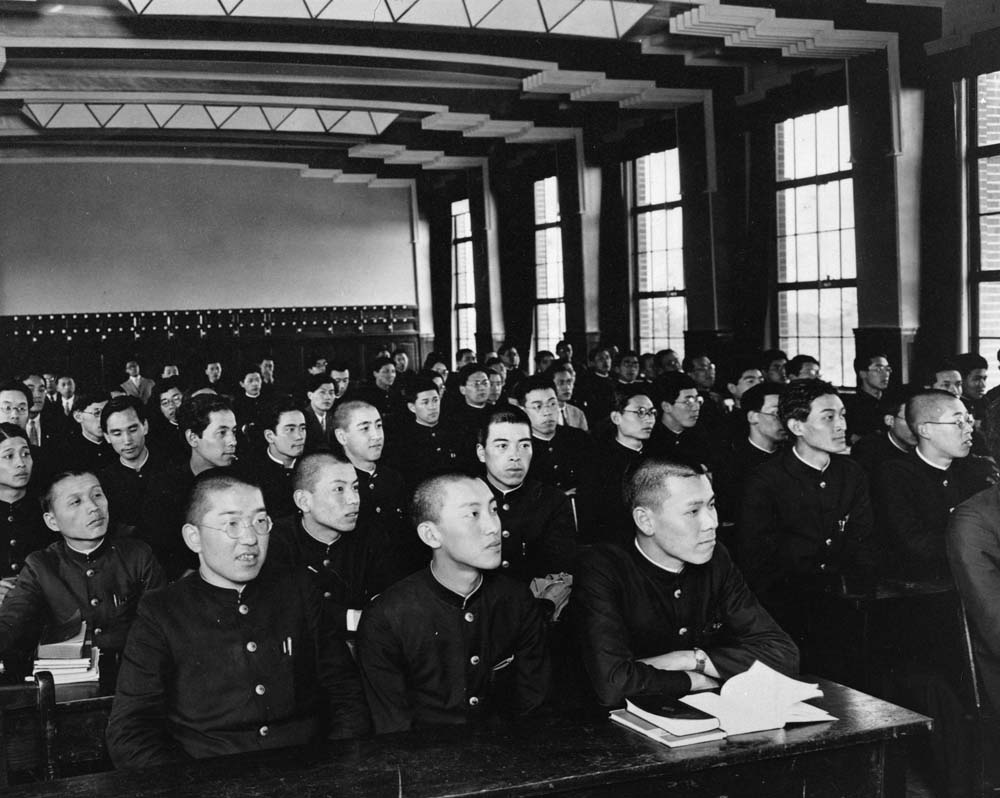
2.The Shift Toward Coeducation and the Establishment of Female Student Support Systems Late 1950s to Early 1960s
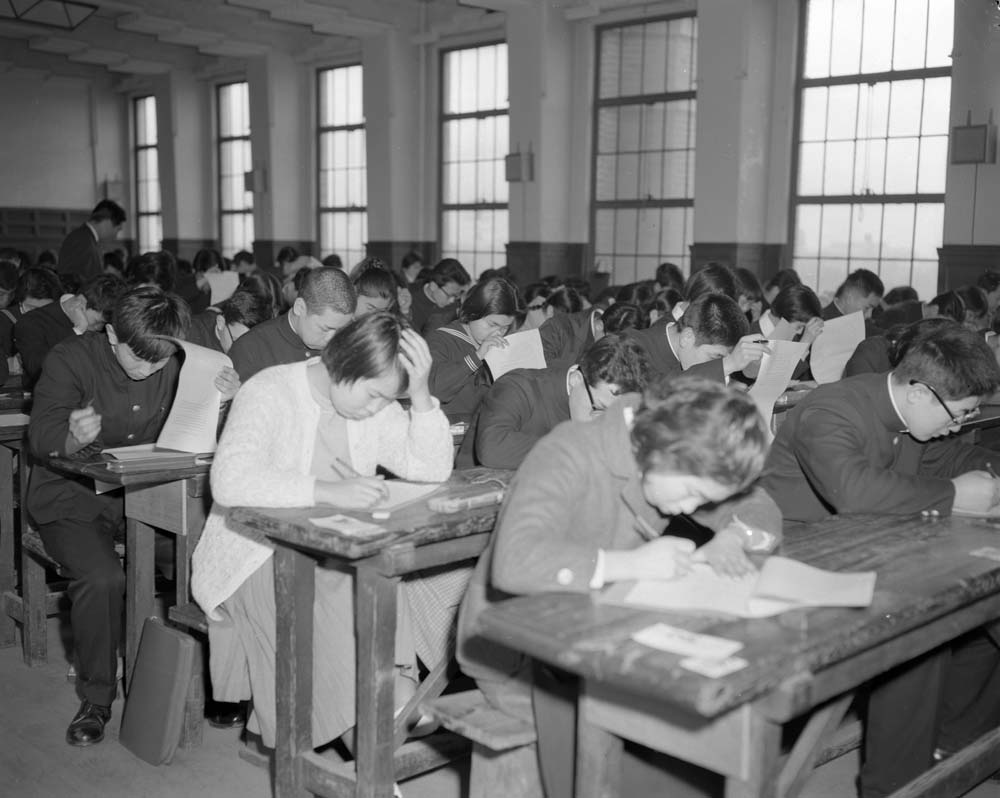
Following the war, many universities in Japan adopted coeducation, and in response to declining enrollment figures, Sophia University began considering the necessity of coeducational reform. In 1949, the university established an international division that admitted former military personnel, foreign nationals, and female students. In 1957, four women who had graduated from Shirayuri Junior College became the first female students enrolled in Sophia University’s specialized courses. Admitting women was a groundbreaking step for an institution run by the Jesuit Order at that time. The following year, women were admitted as first-year students.
With the arrival of these students, the university opened its first women’s dormitory in 1961. In 1962, the university established a women’s student counseling office to help female students adjust to academic life, initiating a structured support system.
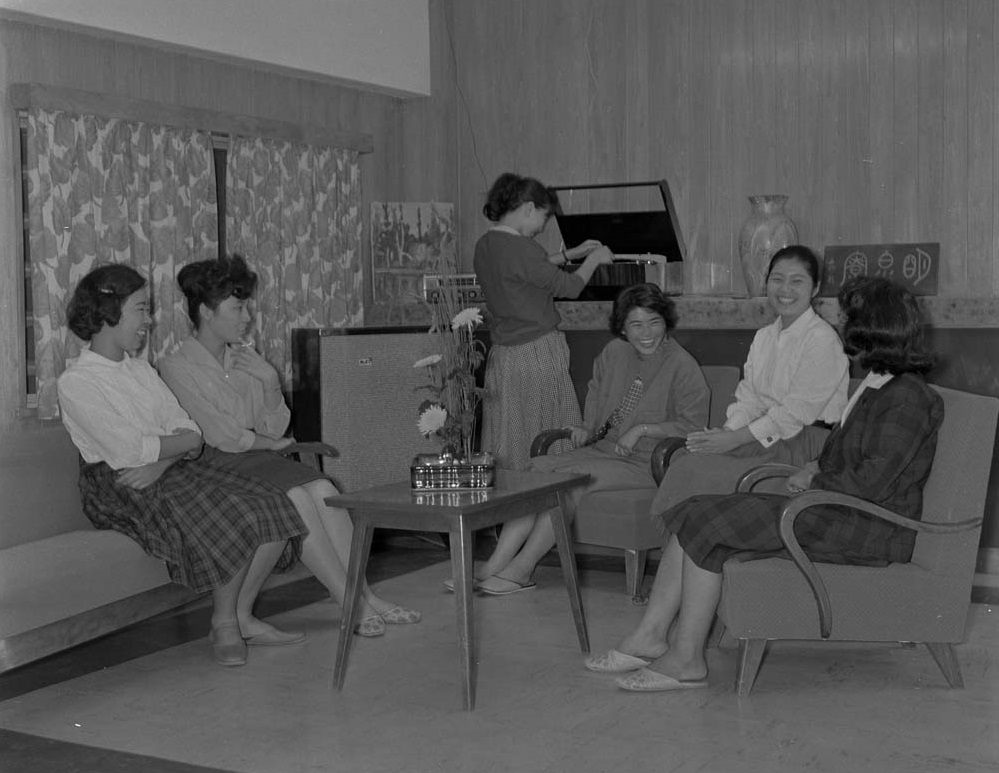
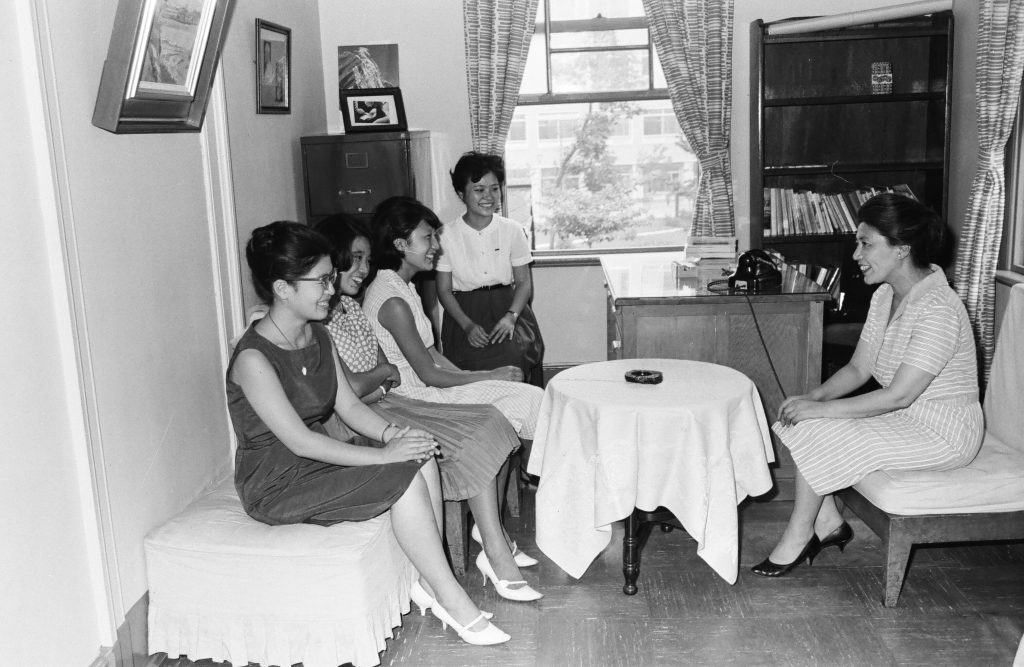
3.Expanding Support Systems for Female Students: Late 1960s to 1970s
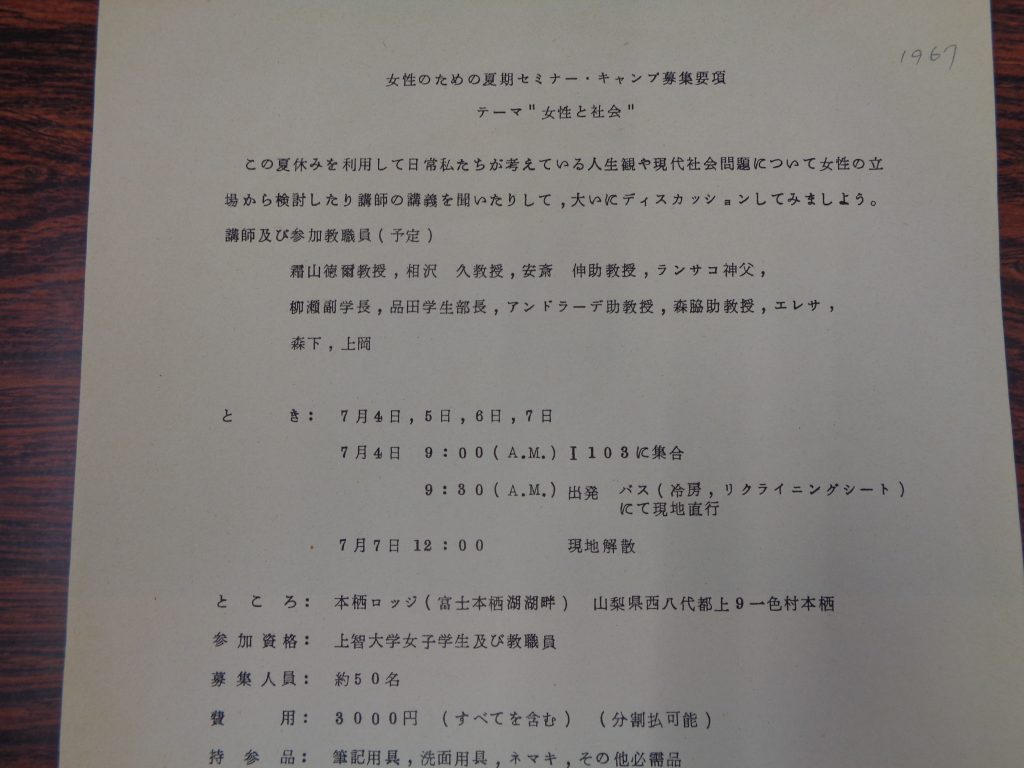
Efforts to support female students continued to grow. This growth continued through the late 1960s and 1970s. In 1967, the first “Summer Seminar and Camp for Women,” organized by the Women’s Student Guidance Office, provided an opportunity for self-development. The seminar’s theme that year was “Women and Society,” and participants engaged in lectures and discussions. In the seminar’s report, active conversations were highlighted on how societal expectations should be navigated by women along with how their university education could be applied in the broader social context.
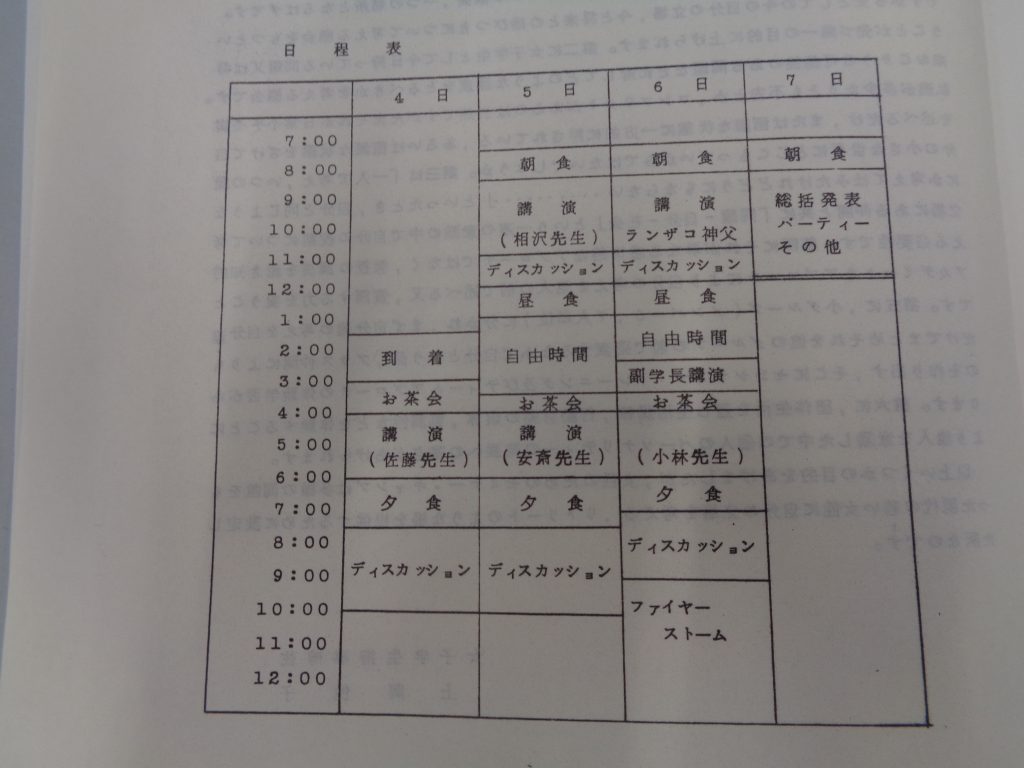
In 1975, the Department of Student Affairs conducted a survey on awareness among female students, and the findings provided foundational data for the Women’s Counseling Office’s work. Sophia University’s commitment to educational equity was evident in its proactive response to the societal challenges faced by women. At a time when opportunities for women to apply their academic knowledge beyond the classroom were limited, the university swiftly implemented systems of support to ensure the success of its female students.
4.Support for Female Researchers: Late 1980s to Present
The enactment of the Equal Employment Opportunity Law for Men and Women in 1986 marked a pivotal moment for gender equality in Japan, yet the situation for women in the workforce and academia did not undergo immediate transformation. Despite these challenges, the number of female students at Sophia University surpassed the number of male students by 1998. According to the 1998 issue of Sophia News (No. 355), the Women’s Student Counseling Office, which had operated for 35 years, closed in 1998 due to a significant decline in demand for its services. This was in line with the passage of the Basic Law for a Gender-Equal Society in 1999.
Following these developments, Sophia University refocused its efforts on supporting female researchers. In 2009, the Ministry of Education, Culture, Sports, Science, and Technology launched a project to support women researchers in scientific and engineering fields, where their representation had traditionally been low. This initiative aimed to nurture female researchers and encourage female students to pursue careers as researchers. As society became more aware of the need for diversity, the university’s support systems also evolved. Initially, the focus was on gender equality, but it shifted towards a more inclusive model that addresses a variety of social identities. Today, Office for the Promotion of Diversity and Sustainability oversees initiatives that promote equality and inclusion. Its priorities encompass a wide range of issues, including gender, LGBTQ+ rights, work-life balance (parenting, caregiving), disability and accessibility, multicultural coexistence, and age demographic diversity. The goal is to foster an environment in which people from different backgrounds can interact, collaborate, and flourish with mutual respect.
References:
・“Sophia Times” No. 355, April 1, 1998.
・Sophia University Center for Student Affairs, “Report of the Second Survey on Female Student Awareness”, 1983.
・Sophia University Women’s Student Guidance Office, “Report on the First Summer Seminar and Camp for Women”, 1967.
・Sophia University 100th Anniversary Committee, “Sophia’s 100 Years”, Sophia School Corporation, 2013.
・Sophia School Corporation, “Sophia University Statistical Data 2024” https://www.sophia-sc.jp/disclosure/statistics
・Sophia University, “Women Students at Sophia University”, Web publication No. 39
https://piloti.sophia.ac.jp/assets/uploads/2023/02/websophia_039.pdf
・Sophia University Office for the Promotion of Diversity and Sustainability
https://diversity.sophia.ac.jp
*Photos and historical materials marked with an asterisk are from the Sophia Archives.